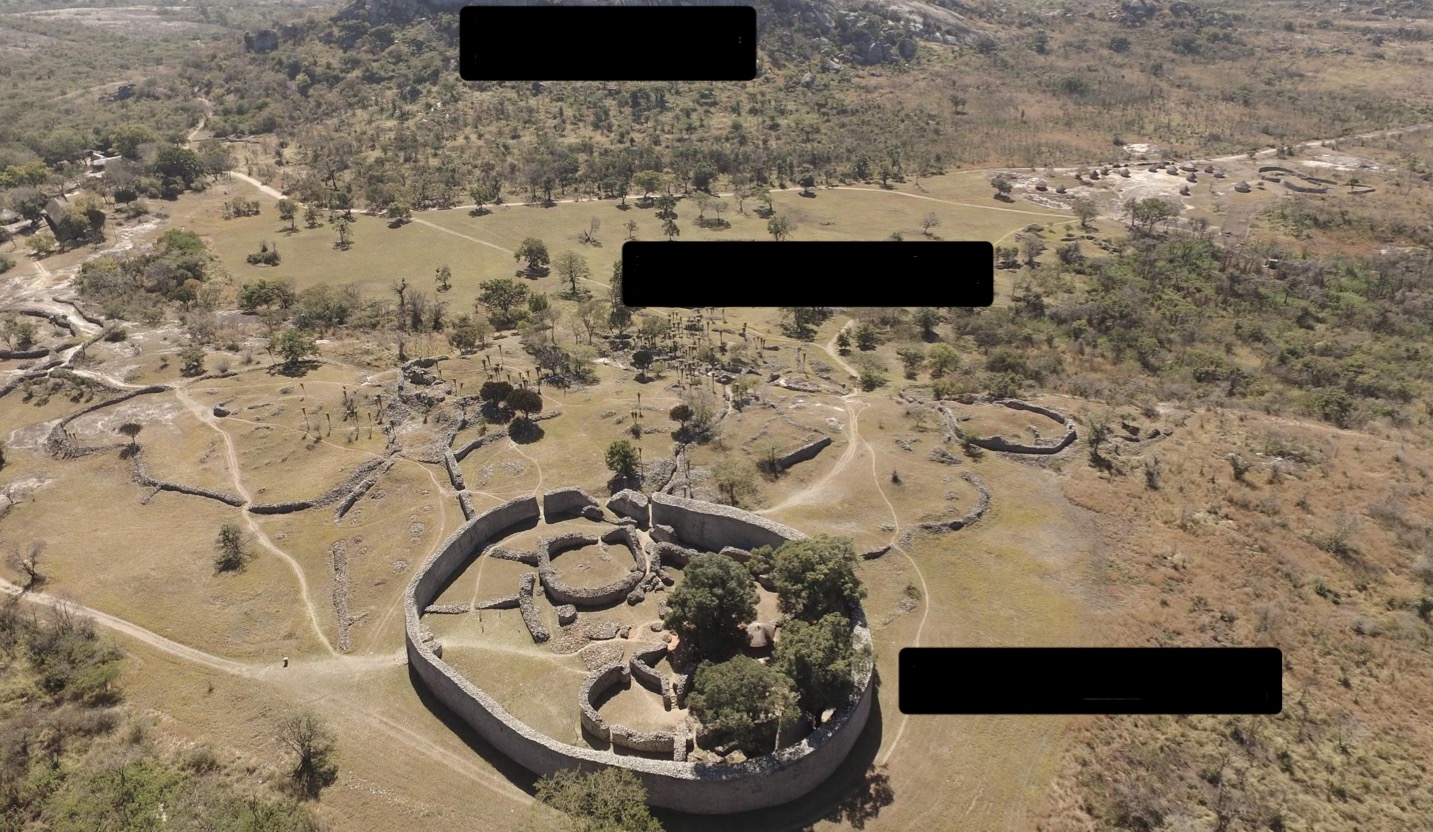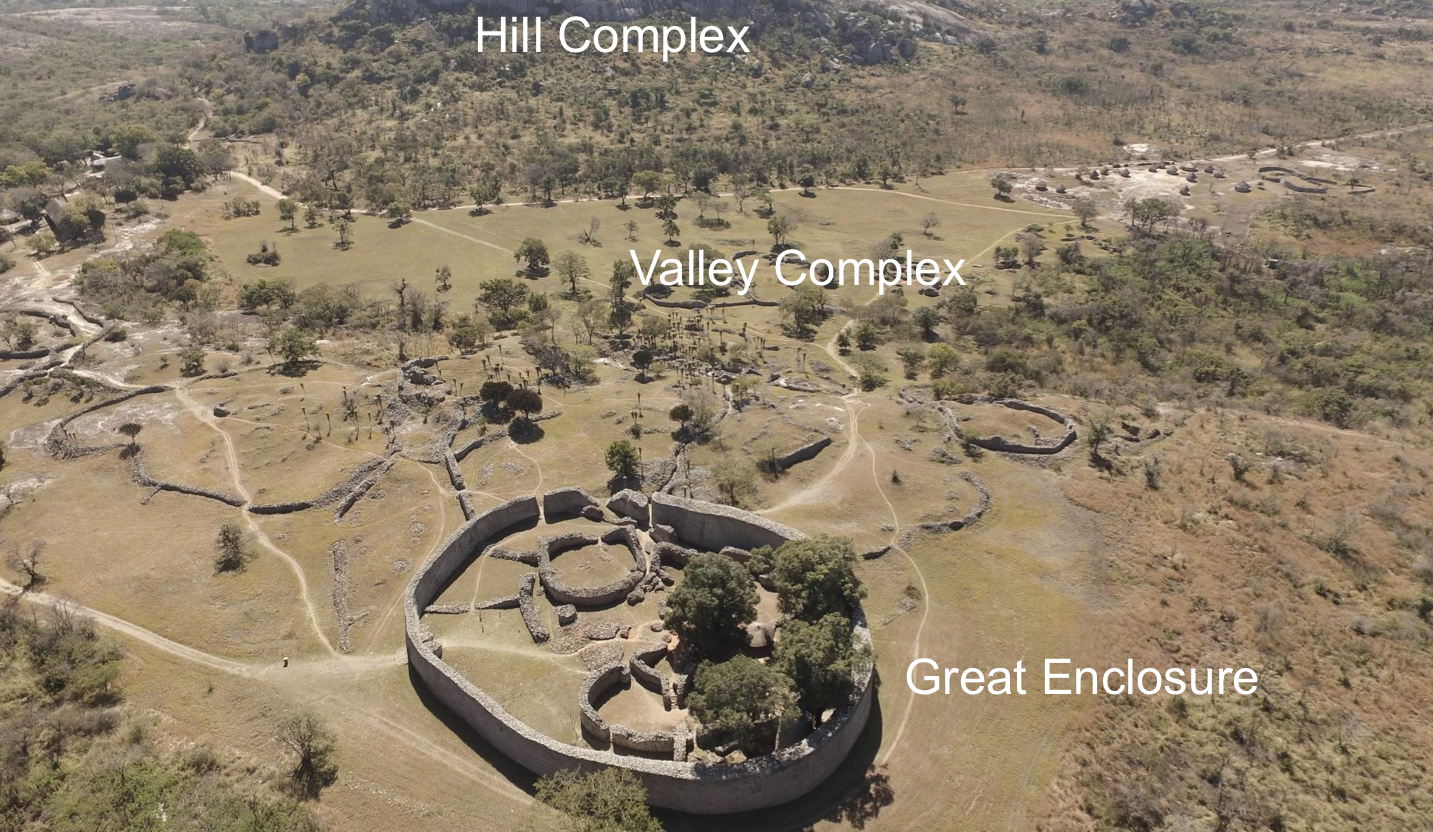Lecture 15: Great Zimbabwe (part 2)
1/36
There's no tags or description
Looks like no tags are added yet.
Name | Mastery | Learn | Test | Matching | Spaced |
|---|
No study sessions yet.
37 Terms
the hill complex was built [before/after] the valley complex and the grand enclosure
before
how were political roles determined?
lineage (hereditary)
true or false: material culture was associated with political status (a lot of material = higher in power)
false: they weren’t related, you could be poor and still be a ruler
what did marriage outside of lineage allow?
fluctuation: could move between classes

identify the sections (great enclosure, hill complex, valley complex)

what was the purpose of the walls around the hill complex?
symbolic of authority and power (not defensive!)
true or false: everyone lived in a daga houses (mud houses), elite or commoners
true
how was the entrance to the great enclosure restricted?
narrow passageways, doors
residences were first built in the [great enclosure/hill complex] and the moved to the [great enclosure/hill complex]
first hill complex, then moved down to great enclosure
true or false: we built new enclosures towards the centre
true: new ruler = new enclosure
true or false: there were some artifacts differences between hill complex and great enclosure
false: same objects were founds
what are some features of the hill complex? (4)
eastern and western parts: were built at different times
lot of small passages: restrict people so that they can’t move easily
slope and terraces to control erosion and agriculture
stone platforms with monuments
how and why did we separate the hill complex?
how: with narrow passageways
why: symbolic (you move from commoners to elite, transition)
what’s the most notable feature from the eastern enclosure?
soapstone birds
what do the soapstone birds represent?
african eagle: power and sacred dimension
why were the soapstone birds made out of soapstone? (2)
easier to carve
soapstone maybe had a ritual value
true or false: we believe that there were 8 soapstone birds arranged in circle
true: they circled an altar
true or false: the king’s wife lived in the eastern complex (on top) while he lived in the western complex (at the bottom)
false: the complexes weren’t used at the same time
describe the interior passage found in the great enclosure and in the hill complex
double walled (walls on both side) that restricted the area
present in hill complex and great enclosure
symbolic: transition from elite to commoner
describe the conical tower
more accessible than other buildings in great enclosure
had a granary to store elite’s grains and plants
used to organize feast (shows that people shared meals together)
true or false: in other valley complexes, daga houses were entirely enclosed by stone walls. no access were possible
false: they were partially enclosed (half closed and half open)
what were the maund ruins and what did we figure out with them?
found by Thompson: part of the lower valley that wasn’t excavated yet
she looked at what she believed were empty spaces but no! were actually houses muds
concluded that houses were circular AND that shona people shared objects equally (elite had same thing as commoners)
what were some long distance trade objects found? (4)
beads (india)
porcelain (persia, china)
glass (mediterranean)
earthenware (china, ming dynasty)
how could Great Zimbabwe trade with other countries, like india?
because they were close to the indian ocean
against what would people trade gold? under what form the gold would be?
objects that come from far away
in nuggets (not processed)
true or false: we had gold crafting specialists at Great Zimbabwe
false: they were skilled, but not professionals, still small scale and not full time
true or false: people would only use gold as trading methods
false: gold was also shaped to use as decoration
[cooper/gold/iron] and [cooper/gold/iron] were used for wealth items while [cooper/gold/iron] was used for non wealth items
cooper and gold = wealth, decoration
iron = non wealth (knife, arrows)
true or false: soapbirds were produced locally
true: skilled labour (birds had a lot of details)
true or false: gold and soapstone birds were found all around Great Zimbabwe
false: gold was, but soapstone birds were only found inside the walled area
what are the proofs that status wasn’t linked with material culture? (3)
objects were made for both royals and commoners
house designs were identical
commoners and royals ate the same animals
what was only found inside the walled areas? (2)
soapstone birds and imported goods
→ small inequality, strongly egalitarian
true or false: both elite and commoners were involved in metallurgy and pottery
true: it was found inside and outside the walls
what do we mean when we say that people lived autonomously?
houses worked together to produce their own craft
true or false: people living in Great Zimbabwe had a lot of agency (could do what they wanted)
true: egalitarian
true or false: we performed sacrifices at Great Zimbabwe
false: no proof
explain the idea that the unwalled area would have been occupied only before the decline of Great Zimbabwe
people would have first lived in the great enclosure, but needed more space
started to live outside because they needed more space, not because of a status difference